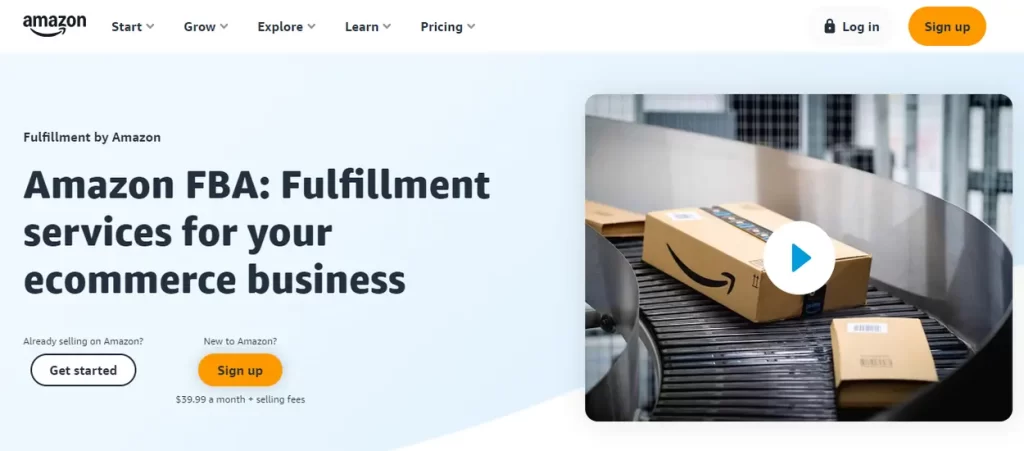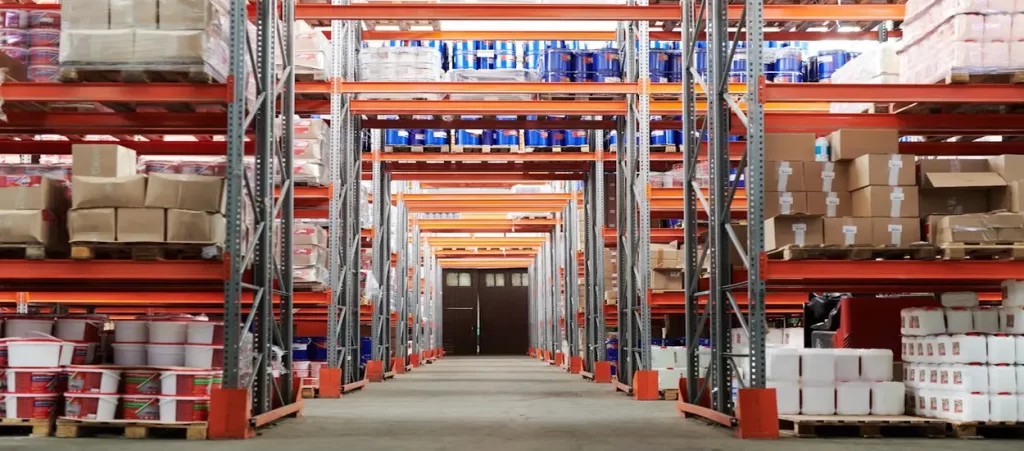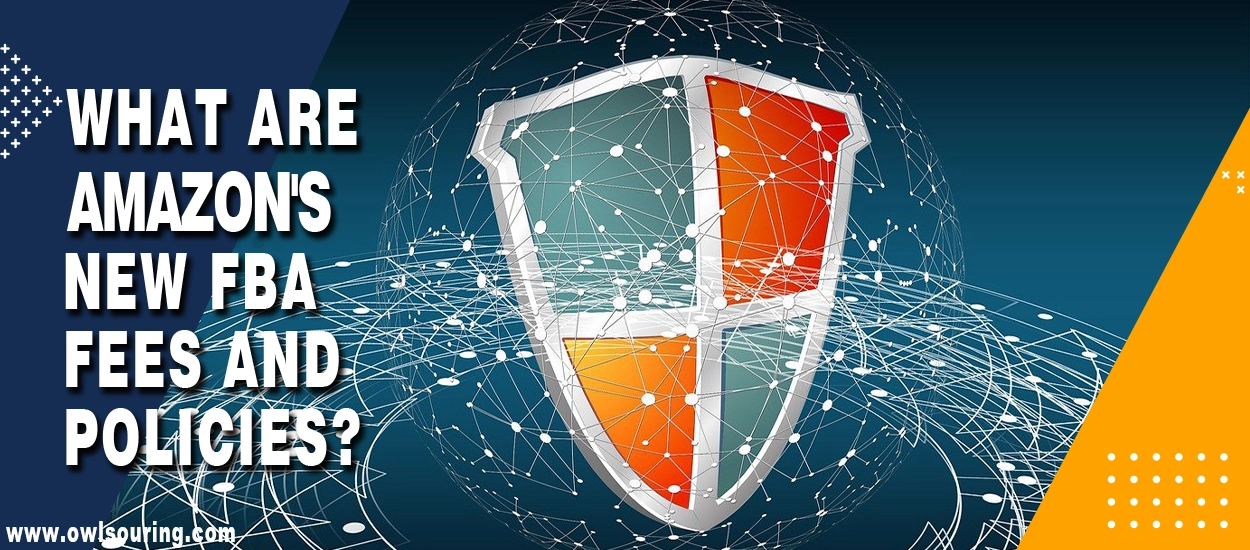Many importers buy from China and sell on Amazon. Well, it is different from your typical local sourcing.
Amazon adjusts its regulations to match vendor and consumer expectations. Hence, there have been updates to Amazon FBA fees and policies.
With these changes, Amazon hopes to keep its competitive advantage in the market. Of course, it also aims to improve efficiency and streamline operations.
FBA sellers must adapt to these new requirements to stay profitable. This guide covers how Amazon FBA fees and policies may affect sellers. It also examines how to deal with these changes. Well-informed sellers may succeed in the fast-paced e-commerce industry.
But before we start, ask yourself;
- Am I familiar with the revised FBA fees based on product size, weight, and seasonal changes?
- Have I reviewed my seller account performance and made improvements to meet standards?
- Am I prepared to implement just-in-time inventory strategies? Am I using Amazon’s Inventory Performance Index (IPI) to avoid increased storage costs?
- Have I reviewed and updated product descriptions to meet Amazon’s new listing requirements?
- Do I know an Amazon FBA sourcing agent in China to ensure a smooth sourcing process?
- Am I ready to consistently monitor Amazon Seller Central for policy updates?
I will address all these questions to help you understand all the major changes.
New FBA Fees and Policies Implemented by Amazon

The Amazon FBA fees and policies introduce several changes to the present system. Significant changes are a revised fee structure based on product size and weight. It also involves changes to handling fees for specific product categories.
Amazon will apply peak season costs for its third-party seller fulfilment services. From October 15, 2024, until January 14, 2025, FBA’s holiday peak fulfilment price will be in effect.
Amazon FBA shipping and fulfilment fees will return to their non-peak time rates on January 15, 2025. The fees are structured into peak and non-peak fees. It is further classified according to size tier and shipping weight.
Dangerous products that need special storage incur extra fulfilment fees. Products below $10 will be automatically billed at the Low-Price FBA rate. It will have a delivery speed similar to that of standard FBA. The difference between regular FBA fees and Low-Price FBA rates is $0.77.
Free shipping is offered at all low-price FBA rates for Prime members. Then, regular shipping is accessible for non-Prime customers. Amazon is constantly adapting to balance operating expenditures, vendor profitability, and customer satisfaction.
How New Policies Impact FBA Sellers
The new FBA fees and rules will impact buyers who import from China. Understanding these effects is vital for developing sound strategies to maintain profitability. Here’s how new policies impact FBA sellers:
1) Seller Performance Metrics
Amazon regularly monitors seller account performance and policy compliance. Sellers are evaluated based on metrics, including the percentage of order defects. It also includes the rate of late shipments and the feedback ratings.
Account suspensions and other penalties might ensue from policy violations. Sellers must meet high standards to avoid account restrictions. So, they must adapt to the changes in Amazon’s FBA policy.
Knowing where to buy products to sell on Amazon is not enough. To meet these new standards, sellers should make their business more efficient. Also, they must put effort into making their customer service better.
It could mean spending money on better methods for keeping track of goods. It also involves making sure products are packaged in the best way possible. Talking to customers more clearly while their orders are filled is also vital.
2) Product Listing Requirements
The new policies also impact the product listing requirements. It makes product information on the site better and more accurate overall. Sellers will have to give more thorough and consistent descriptions of their goods.
These changes are meant to make shopping more enjoyable for customers. It also aims to reduce the number of returns caused by unsatisfactory standards.
It means you cannot just source products from Yiwu to sell on Amazon. To meet these new policies, sellers should review their current product ads carefully. In doing so, they can spot and make any required changes.
3) Inventory Management
You might know how to source products from China for Amazon FBA. But, do you know the new FBA policy updates make extended storage harder? It changes how the product is distributed among delivery centres more dynamically.
Sellers must closely monitor their inventory levels and change how they restock. They can avoid storage fees and inventory restrictions by doing this.
Sellers could ship smaller items to Amazon delivery hubs more regularly to adapt. This method can help keep the right amount of stock on hand while keeping storage costs as low as possible.
You may also leverage Amazon’s inventory performance tools and statistics. It will aid you in making intelligent stock management decisions.
Make a list of the best-selling Amazon products you can import from China. Find reliable China suppliers for them and plan your inventory.
Managing Inventory to Avoid Increased FBA Costs

Knowing how to reduce FBA fees is very important. With the new Amazon FBA fees and policies, FBA sellers must learn to keep track of their goods well. Innovative strategies keep expenses down while satisfying customers. Here’s how to avoid Amazon FBA cost increase:
1) Optimising Inventory Turnover Rates
Under the new fee system, increasing the turnover of goods is essential. Less time in storage means lower fees because things are sold more quickly. It’s vital for sellers to correctly predict demand so they don’t end up with too much inventory.
It could mean looking at past sales data and observing market trends. It also involves taking things like timing into account.
Using dynamic price techniques can also help get rid of stock faster. Offer promotions or combine slow-moving products with faster-moving ones to sell more. Monitor products’ performance and adjust stock levels to maximise inventory turnover rates. You should work on creating a global sourcing strategy.
2) Implementing Just-in-Time Inventory Strategies
Under the new FBA fees 2025, Just-in-Time (JIT) inventory management is ideal. With this method, you can reduce storage costs and keep a limited stock. Then, restock often based on how much is being bought.
JIT means that packages have to be sent to Amazon more often. But it can save you a lot of money on holding fees. This method can be challenging to get right. But it can lead to leaner, cheaper inventory management that fits Amazon’s fees.
3) Utilising Amazon’s Inventory Performance Index
With the new FBA inventory fees, Amazon’s Inventory Performance Index (IPI) is valuable. This measure tells you how well you track your FBA goods. If your IPI number is better, you might be able to store more data and pay less.
To raise your IPI, work on keeping your product levels in check. Also, get rid of excess stock and increase your sell-through rates.
Pay close attention to the specific parts of the IPI. It includes the percentage of extra inventory and the amount of stranded inventory. Review your IPI screen often and follow the suggestions it gives you.
This proactive method can help you get the most out of Amazon FBA fees and policies. In addition, it will help you handle your inventory more efficiently.
4) Reducing Excess and Aged Inventory
With the Amazon FBA storage fees, managing excess and aged inventory becomes crucial. First, figure out which items in your store aren’t selling quickly or are overstocked. You might want to run sales or deals for these items to get them sold faster.
You could also try selling these products through other outlets. See if removing items from FBA warehouses nearing long-term storage is cheaper.
You can have things returned to you or thrown away through Amazon’s return order method. Sometimes, it might be worth losing money on some items.
It will help you prevent having to pay storage fees repeatedly. You can avoid expensive long-term storage fees by watching your goods. Then, the necessary action is taken on older items regularly.
Best Practices for Adapting to New FBA Policies
Amazon FBA selling policies are constantly changing. So, buyers need to be flexible and follow the new guidelines. Below are the best practices for adapting to Amazon FBA policy changes:
1) Conducting a Thorough Product Profitability Analysis

When FBA policy updates emerge, look at your products again to see which ones make the most money. Find reliable Chinese manufacturers for them.
First, go through your whole collection. Then, determine how the new fees or limits will affect each item.
You should consider things like Amazon’s new storage and fulfilment fees. Don’t forget to consider how sales and storage needs change with the seasons.
Make a worksheet that lists all the costs of making each product. These include the materials and shipping fees for Amazon FBA. Compare these expenditures to the items’ usual selling price and sales to assess profitability. It determines which goods can still be sold under the new Amazon FBA storage fees.
2) Using Amazon’s Reporting Tools for Better Decision-Making
With the new Amazon FBA fees, Amazon gives you many data and reporting tools. Using these tools can help you make intelligent choices. Study these tools and use them regularly to track your success and improve.
The Inventory Health report helps you keep track of your stock. This report tells you how old your product is and how fast it sells. Also, it reveals how much you can expect to pay for long-term keeping. Use this information to make fact-based decisions regarding restocking, sales, and discarding products.
If you want to see how new fees will affect your goods, the FBA Calculator is another great tool. Enter information about your goods and how much it cost into the calculator.
Then, you’ll see how FBA fees are broken down and how much money you can expect to make. It can help you quickly determine if a product can still be sold under the new Amazon FBA storage fees.
3) Staying Informed About Future Policy Changes and Updates
Knowing future developments in the fast-paced industry is crucial. Make it a habit to check Amazon’s Seller Central often for new policies and news. Most of the time, these messages let you know about new policies ahead of time. Thus, it gives you time to plan and change your strategies.
You should join Amazon seller groups and sites. You can talk with other sellers about Amazon FBA policy changes on these platforms. These sites can give you helpful information and tips on adjusting to new rules.
Read More:
- Where to Buy Products to Sell on Amazon?
- Amazon FBA Sourcing Agent in China
- How to Find Chinese Private Label Manufacturers for Amazon FBA
- How to Use Alibaba for Amazon FBA Sourcing?
Final Thoughts!
Navigating Amazon’s new FBA fees and policies may seem daunting. But with a proactive approach, sellers can adapt successfully. Sellers can stay competitive in the ever-changing world of e-commerce.
They must keep up with changes in fees, success measures, and inventory management. To keep a business profitable, buyers need to stay informed and flexible. It helps manage Amazon FBA fees and policies while fulfilling client demands.
Contact OwlSourcing to get the best Amazon FBA service. Our team knows everything about importing products from China.


